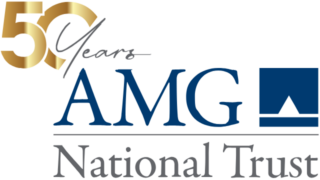Fed Looks To Test Recovery With Tapering Before Hiking Rates
• 3 min read

Get the Latest Research & Insights
Sign up to receive an email summary of new articles posted to AMG Research & Insights.

As the domestic economy pummels through the final rounds of post-COVID-19 recovery, the Federal Reserve (Fed) is preparing to dial down its support of the U.S. economy, beginning with “tapering,” or reducing the monthly volume of financial assets it purchases.
In 2013, the last and only time the Fed announced a planned reduction of monthly purchases—instituted in the wake of the 2008 financial crisis and subsequent recession—the move sent markets into a brief but volatile temper tantrum. Treasury-bond yields jumped, stock-market volatility soared, junk bonds fell and emerging markets shriveled.
The Fed hopes to avoid that this time around.
For months, the U.S. central bank has hinted at tapering off its $120 billion-a-month purchase of treasury bonds and mortgage-backed securities—a program launched in 2020 as a means of stabilizing an economy ravaged by a pandemic-induced lockdown. But no timetable has been set as the central bank waits for the economy to strengthen even more.
Once tapering is underway and if the economy continues to expand without major hiccups, the Fed will tighten financial conditions further, using its more traditional protocol—hiking the short-term policy rate, known as the federal funds rate. This interest-rate bump should ripple through the economy, bringing lending activity to a level more appropriate for the next stage of the business cycle.
What is the Fed’s likely timeline? The most recent report on private payrolls shows that the economy is still creating jobs, but the rate of job creation has slowed even as inflation in certain parts of the economy has accelerated. Elevated inflation ordinarily coincides with low unemployment and accelerating job creation, so the present conditions complicate the Fed’s calculus. Before the recent slowdown in payroll growth, tapering likely would have begun mid-autumn, but the first reduction seems more likely closer to year end. Volatility in rates will likely tick up as markets interpret the forward path of rates, but unlike during the 2013 taper tantrum, the markets will be better prepared for the news.
As AMG expected, the Fed used its Sept. 22 meeting to prepare the financial markets by shedding more light on its timeline, and although it did not commit to a set date, the central bank signaled that scaling back asset purchases could begin as soon as November. The door remains wide open to waiting longer if needed and Chairman Jerome Powell stressed that tapering was not meant to start an irreversible countdown to liftoff from near-zero interest rates.
The Fed will now wait for evidence that the real economy continues to grow and once the labor market resembles pre-pandemic conditions and inflation expectations stabilize near the Fed’s target of 2%, it will begin more traditional monetary tightening. AMG expects the necessary preconditions to materialize late next year, but this horizon may change if non-transitory inflation appears or if another malignant COVID-19 variant scuttles the recovery. Neither scenario is included in AMG’s present investment Base Case, but ongoing vigilance is warranted in these unprecedented times.
This information is for general information use only. It is not tailored to any specific situation, is not intended to be investment, tax, financial, legal, or other advice and should not be relied on as such. AMG’s opinions are subject to change without notice, and this report may not be updated to reflect changes in opinion. Forecasts, estimates, and certain other information contained herein are based on proprietary research and should not be considered investment advice or a recommendation to buy, sell or hold any particular security, strategy, or investment product.
Get the latest in Research & Insights
Sign up to receive a weekly email summary of new articles posted to AMG Research & Insights.



